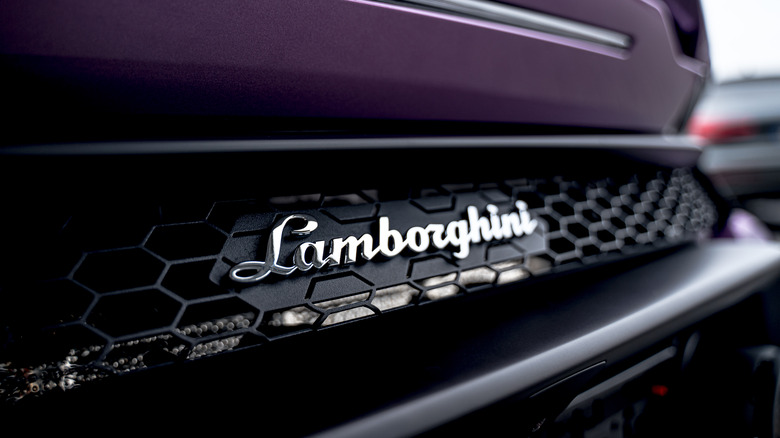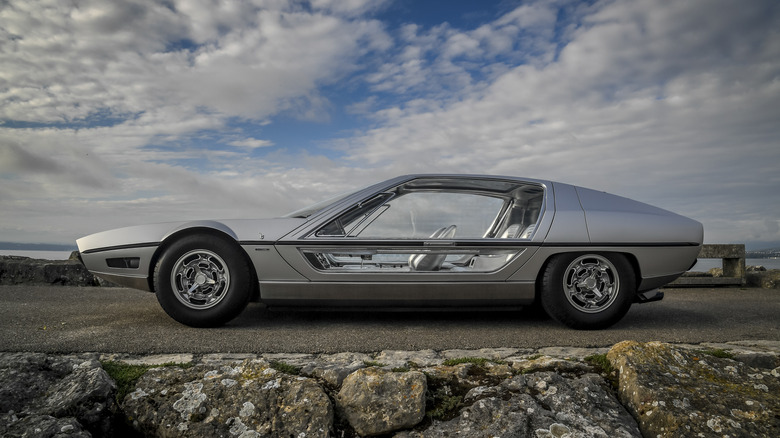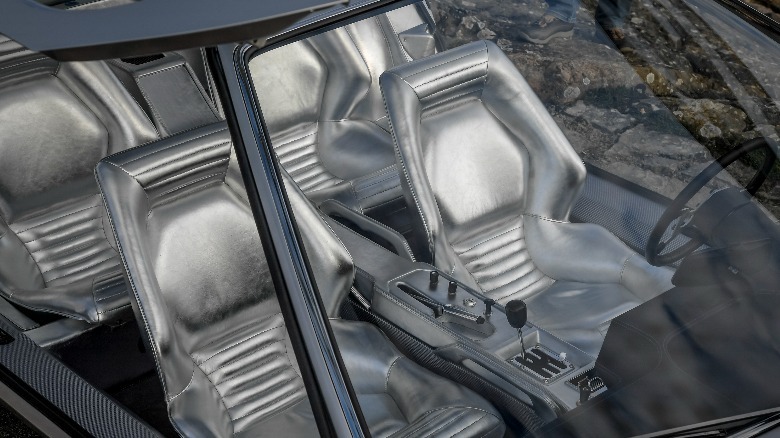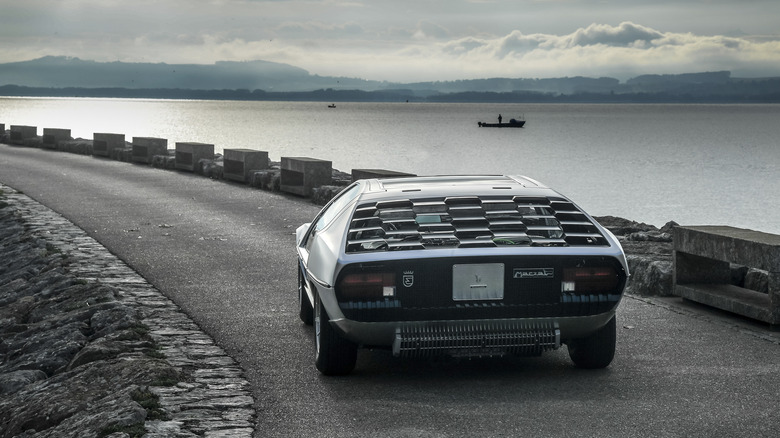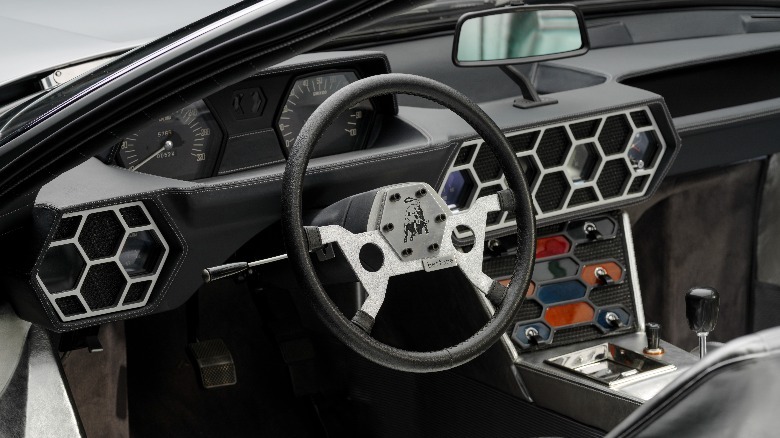The Forgotten Lamborghini Concept That Looks Like A Spaceship Made Of Glass
It's safe to say that most of Lamborghini's lineup, including historical models, is unconventional-looking. The current Aventador is a 700-plus-horsepower, V12-powered, hyper-aggressive wedge. The Countach is one of the most recognizable cars of all time, and it looks more like a brightly colored stealth fighter jet with a license plate than anything resembling a "normal" car. Even lesser-known Lamborghinis from the past can look downright wacky. Not exactly a winner, the Lamborghini Jalpa looks like a sad fiberglass shovel and is not quite the car one would use to cruise around Monaco.
The Lamborghini Espada from the late 1960s is one of the first designs from Lamborghini that took a hard turn right into left field. From the front, it looks like a classic Italian sportscar from the era, right at home next to Maseratis and Alfa Romeos. That's where all similarities stop as the back features incredibly aggressive lines, huge windows, and a passenger compartment to support two additional seats in the back. This daring design helped the Espada become the brand's bestselling car for the decade between 1968 and 1978. The Espada, however, didn't come out of nowhere. The concept car that inspired the smash-hit grand tourer might be one of the strangest designs to come out of an automaker already known for automotive wackiness. That concept was the Lamborghini Marzal.
A wild concept
In 1967, right before the Formula 1 Monte Carlo Grand Prix, Lamborghini debuted the Marzal. Driven by the Prince of Monaco, the Marzal acted as the pace car for the race. After opening a few more races the following couple of seasons, the Marzal concept was put into storage for several decades. The Marzal's appearance took everyone by surprise (via Lamborghini).
For starters, the Marzal looks like a rolling greenhouse with glass and windows over nearly every surface possible. Designed by the artisans and/or maniacs at Bertone, the Marzal looks like a car cut from "Blade Runner" for being too outlandish and insane. According to Lamborghini, the Marzal concept features the most glass surface area ever put on a car at 4.5 square meters, or about 48 square feet. That means, it has essentially an entire phone booth's worth of glass.
According to RM Sotheby's, the Marzal was based on a Lamborghini Miura chassis that must have lost a fight with a chainsaw. Powering the Marzal was a one-of-a-kind 2-liter inline-six. That small powerplant was sourced from exactly half of a Miura engine, continuing the theme of cutting up a perfectly good Miura.
Anything but normal
If the outside wasn't outlandish enough, the interior is where it starts to get weird(er). Inside, the Marzal features more hexagonal patterns than should legally be allowed on this side of a beehive. Plus, it features gull-wing doors and silver-colored leather upholstery in case you wanted to be even more ostentatious.
According to Lamborghini, the Marzal concept eventually became the comparatively more sedate Espada. The unrestored concept was later sold by RM Sotheby's in 2011 in Italy for over $1,570,000 (over $2,000,000 in today's money). To celebrate the 50th anniversary of the Espada in 2018, Lamborghini brought the now-restored Marzal concept back to Monte Carlo to once again take a lap around the track before the race.
Nothing about the car was subtle, and Lamborghini took all the lessons it learned from the Marzal concept and ran with them for several more decades. To detractors, there are several adjectives that can describe Lamborghini: ridiculous, flashy, gaudy, or just flat-out stupid. But "boring" isn't one of them.
